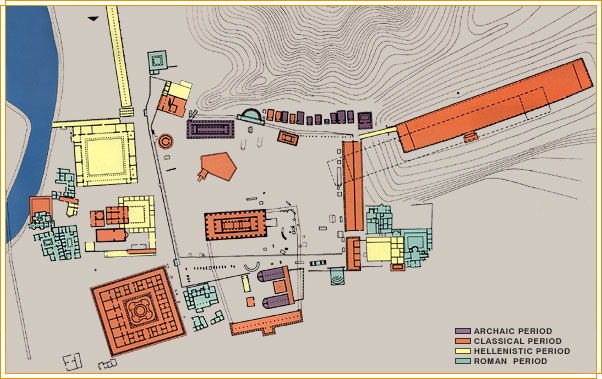 |
|
|
|
||
|
Topography of Ancient Olympia |
|||

|
|||
|
The Temple of Zeus Introduction | statue | metopes | pediments Introduction The Temple of Zeus is located on the inner side of the south enclosure of the Altis. The construction of the temple began after the reorganization of the state of the Eleans (472 BC) and the founding of their capital, Elis. The temple was designed by the Elean architect, Livon and was completed in around 457 BC. The Temple of Zeus was the most magnificent building in Olympia as well as the greatest peripteral temple in the entire Peloponnese. It is considered an example of the Doric order due to the clarity of the style and the high quality of its construction. It was built on a crepidoma, 3 m. high because of the inclination of the ground towards the riverbed of Alpheus. The building material that was used for its construction was local fossiliferous limestone, stuccoed with white marble dust to give the impression of marble. The temple had six columns on the narrow sides and thirteen on the long sides, measuring 10,53m. high with a diameter at the base of 2,25m. and capitals 2,65m. wide. Considered as the heaviest in Greece, these columns are however designed with harmony and symmetry. A marble corona (sima) with a painted decoration and 51 waterspouts on each side were built on the particularly tall entablature (4.09m.). The cella of the temple had a pronaos and an opisthodomos while in the inside lay a pair of two-storey colonnades consisting of seven columns each. Inside the Temple stood the chryselephantine statue of Zeus, the work of the sculptor Phidias and one of the seven wonders of the ancient world. Island marble was used for the construction of the pediments, the relief metopes on the pronaos, the opisthodomos and the tiling of the roof. |
